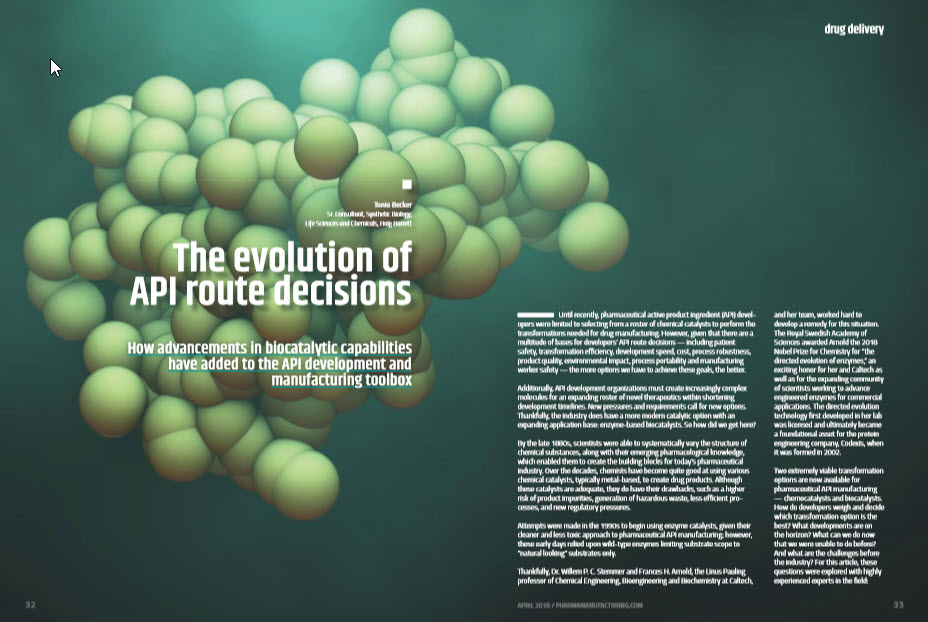How advancements in biocatalytic capabilities have added to the API development and manufacturing toolbox

Until recently, pharmaceutical active product ingredient (API) developers were limited to selecting from a roster of chemical catalysts to perform the transformations needed for drug manufacturing. However, given that there are a multitude of bases for developers’ API route decisions — including patient safety, transformation efficiency, development speed, cost, process robustness, product quality, environmental impact, process portability and manufacturing worker safety — the more options we have to achieve these goals, the better.
Additionally, API development organizations must create increasingly complex molecules for an expanding roster of novel therapeutics within shortening development timelines. New pressures and requirements call for new options. Thankfully, the industry does have a more modern catalytic option with an expanding application base: enzyme-based biocatalysts. So how did we get here?
By the late 1880s, scientists were able to systematically vary the structure of chemical substances, along with their emerging pharmacological knowledge, which enabled them to create the building blocks for today’s pharmaceutical industry. Over the decades, chemists have become quite good at using various chemical catalysts, typically metal-based, to create drug products. Although these catalysts are adequate, they do have their drawbacks, such as a higher risk of product impurities, generation of hazardous waste, less efficient processes, and new regulatory pressures.
Attempts were made in the 1990s to begin using enzyme catalysts, given their cleaner and less toxic approach to pharmaceutical API manufacturing; however, these early days relied upon wild-type enzymes limiting substrate scope to “natural looking” substrates only.
Thankfully, Dr. Willem P. C. Stemmer and Frances H. Arnold, the Linus Pauling professor of Chemical Engineering, Bioengineering and Biochemistry at Caltech, continue reading article
